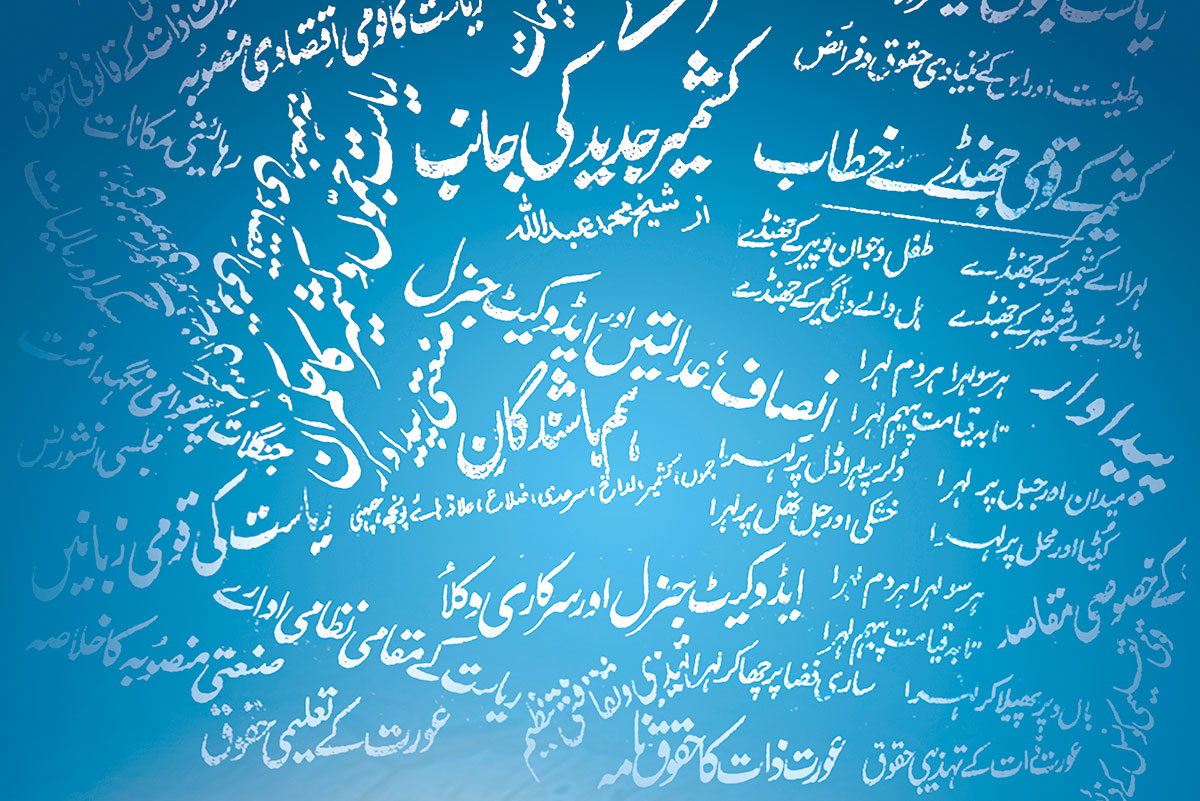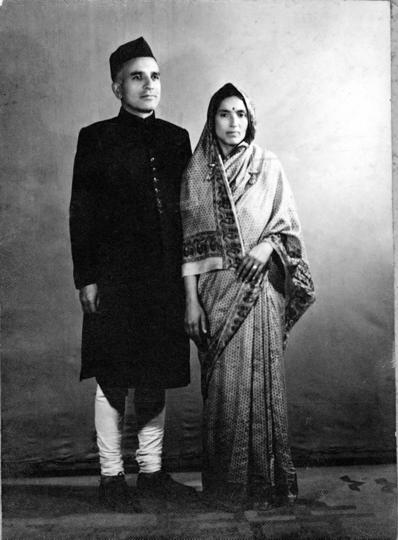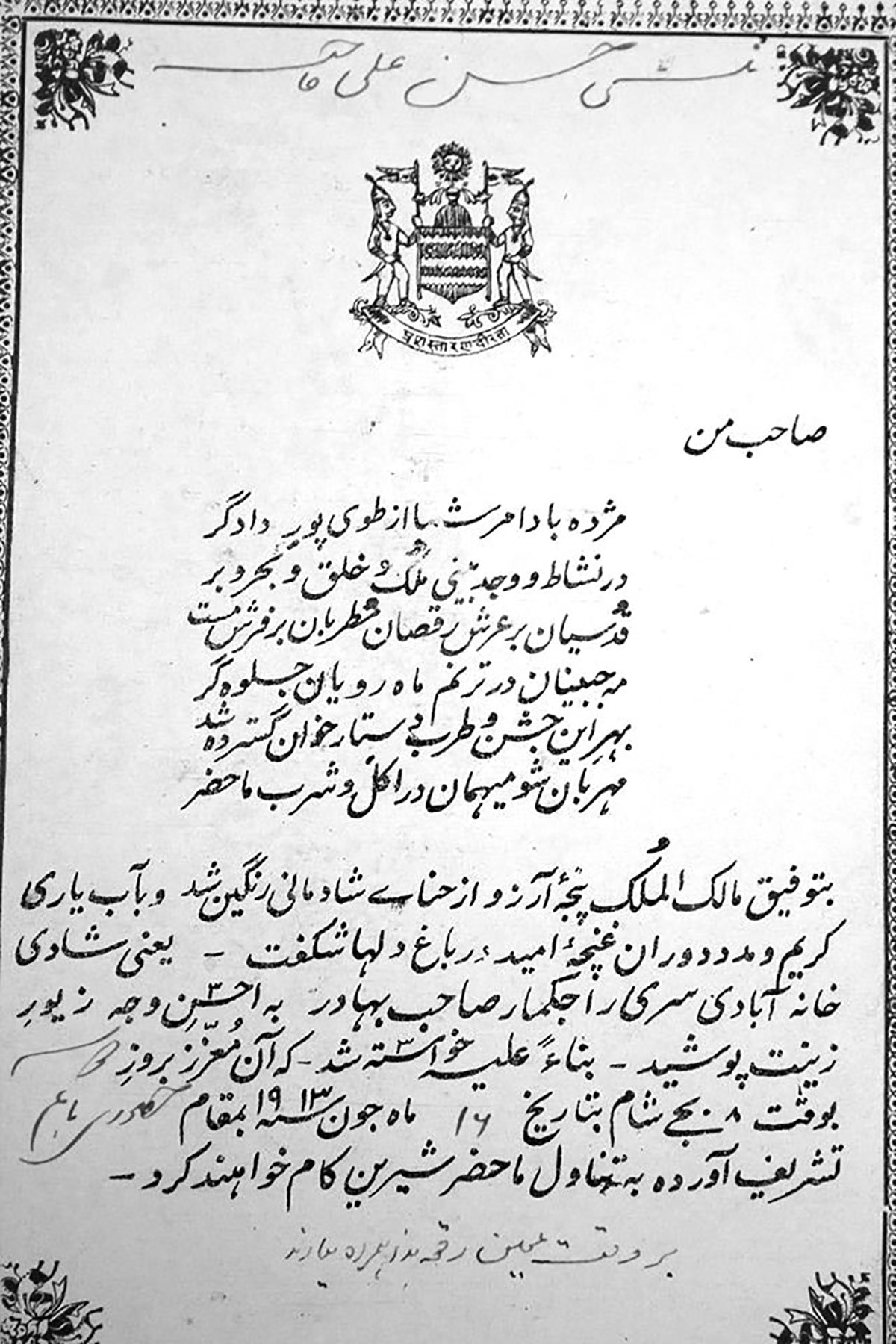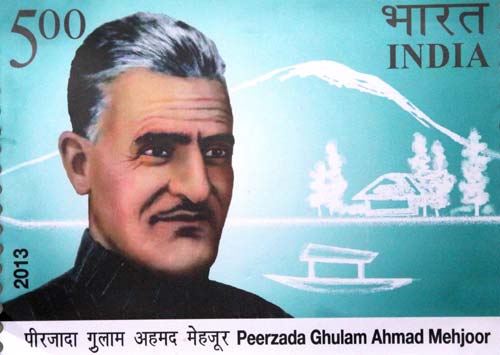By the fall of the nineteenth century, Urdu had effectively replaced Persian as the language of the court and emerged as the new lingua franca connecting a diverse Jammu and Kashmir. Dr Nitin Chandel, in this paper, details how the official patronage encouraged the Kashmir scholars and journalists to make Urdu popular within a few decades

The Dogra period (1846-1947) witnessed the emergence of most Kashmiri authors and poets who wrote in Persian, Sanskrit, Urdu, English and Kashmiri and thus created a taste for literature. It is noteworthy that Persian, which was the official language of Kashmir for over four centuries, influenced and enlarged Kashmiri vocabulary to a large extent. Persian, however, slowly ceased to be the language of the court and of the elite with the eclipse of the Mughals. Urdu took its place steadily and step by step.
The part that Kashmiris played in Urdu’s development and enrichment has again been historic and all-important. In point of that fact Kashmiris, whether Hindu or Muslims, who migrated to various parts of India from the middle of the seventeenth century onwards and settled down in Punjab, Delhi, Rajasthan, Central India, UP and even Eastern India, slowly forgot their mother tongue, Kashmiri and used Urdu as such. They ultimately came to regard Urdu as their mother tongue.
Introduction of Urdu
In Jammu and Kashmir State itself, with the accession of Maharaja Pratap Singh and with the efforts of British Resident C Plowden, Persian the court language was replaced by Urdu. The fact behind this change was that Urdu was used regularly and popularly outside the state.
Urdu had already been popular in the rest of India and the educated elite comprised mostly of Kashmiri Pandits grasped it easily and took mastery over it. It would be no exaggeration to say that the very foundations of the Urdu novel and of its fiction were laid by that great genius, Rattan Nath Dhar Sarshar. His classic Fasanai Azad was universally applauded as a great work of art and charted new paths in virgin soil. These included Prem Nath Sadhu Pardesi, and, Prem Nath Dhar who wrote Kagaz-Ka-Vasudeva and many others. In the field of Urdu prose stalwarts like Tribhuwan Nath Hajar, Shiv Narain Shamim, Sir Tej Bahadur Sapru to name only a few, rendered yeomen’s service.

Urdu Journalism
Again in the development of Urdu journalism Kashmiris have played a significant role. In the Kashmir State itself the legendary Har Gopal Kaul Khasta, was beckoned the father of Urdu journalism. In Lahore and in other parts, the name of Gopinath Gurtu of Akhbar-i-Aam fame was one to conjure with to be followed, with the passage of time, by Dina Nath Chikan Mast’s Subeh-i-Kashmir and Kashmir Darpan of Sir Tej Bahadur Sapru, Murasala-i-Kashmir and Subeh-i-Umed of Brij Narain Chakbast and Bahar-i-Kashmir work are exemplary.
The Masnavi of Daya Shankar Tikku Nasim holds its relevance till now. Brij Narain Chakbast – a great poet touched the very elevations of poetic genius. His poetic collection Khak-i-Hind poems of the same genre should be read with Iqbal’s Mera Wattan Wohi Hai and Naya Shawab written very much later. His mastery of Urdu prose was equally splendid. The diction and thrust of Maarika-i-Chakbast-o-Sharar was brilliant work and Pandit Brij Mohan Dattatreya Kaifi – a venerable label in Urdu literary and cultural spheres all over India is notable.
The Four Kashmiris
Sir Tej Bahadur Sapru once proudly declared: “Urdu is my mother tongue and I am proud of it”. Almost every town in India had minor Kashmiri poets, especially in the Indian States where they enjoyed royal patronage. The four Kashmiris who have earned for themselves a niche in the history of Urdu literature are Mohammad Iqbal, Ratan Nath Dhar Sarshar, Daya Shankar Kaul Nasim, and Brij Narain Chakbast.
Ratan Nath Dhar was the celebrated author of Fasana Azad, which is regarded as the forerunner of the Urdu novel. The story of his coming to literary prominence is as fascinating as his works. He was a school teacher and wrote a piece for the famous Urdu paper Oudh Punch newspaper.
Pandit Jagmohan Nath Raina’s Shauk resulted in the publication finally by 1932 of two excellently brought out volumes of a classic in Urdu, Bahar-i-Gulshan-i-Kashmir. It is a monumental work and received a most enthusiastic reception.

Ban on Journalism
These all literary genius promoted Urdu and soon they were imitated by the majority of the scholars latterly. It is notable to comment here that till 1932, there was a ban on printing press and newspapers in Jammu and Kashmir State. The only sort of political activity that was allowed was the formation of societies for social and religious reforms. Prior, to their formation they had to declare that they would not engage in any type of political activity.
Since newspaper publication was not allowed in the State until 1932, newspapers, periodicals, and Gazette were published from Lahore found their way into the State. The Civil and Military Gazette and the Tribune of Lahore and a number of Urdu weekly magazines circulated in the State.
The Khair-Khawa-i-Kashmir, an Urdu weekly, published from Lahore and edited by Pandit Hargopal Khasta during 1882-83 was critical of Maharaja
Ranbir Singh Government. The Kashmir Prakash, a monthly magazine from Lahore, edited by Pandit Manka Maghar during 1898-1901, worked for the social upliftment of Kashmiri Pandits.
Pandit Mukand Ram Gurtoo, the founder of Akhbar-i-Aam newspaper published from Lahore, Ratan Nath Dhar Sarshar, Editor Avadh Akhbar newspaper, Pandit Hargopal Kaul Khasta founder editor of Ravi Benazir newspaper published from Lahore, Pandit Laxmi Narain Kaul edited a book Bahar-i-Kashmir and published from Lahore, Pandit Tarachand Bulbul who later earned the name and fame as Kashyap Bandhu was an Arya Samajists activist in Lahore. He was on the editorial staff of a widely read Urdu daily newspaper Vir Bharat. All these newspapers published from Lahore entered the State indirectly by various means and reflected political and economic events of the State.
The Kashmir Gazette, Lahore an Urdu monthly edited by Munshi Mohammed Din Fauq during 1901-04, was published for the social and political awakening of Kashmiri Muslims. The Kashmir Makhzen, Lahore an Urdu monthly during 1905 dealt with the social upliftment of the
Kashmiris. Among the other newspapers must be mentioned the Akhbar-i-Kashmir, the Safir, The Subhi-i-Kashmir, The Bahar-i-Kashmir, The Hamdard-i-Hind, The Kashmir, The Mazlum Kashmir, Kuktab-i-Kashmir and the Kashmir Musalman.

Eyes And Ears
The promotion of Urdu through these papers outside the State had a deep impact on the minds of intellectuals of the State. In fact, the Dogras too read these papers and that influence was visible with the birth of Press in Jammu and Kashmir in 1924 when Ranbir newspaper) was started by Lala Mulk Raj Saraf in the Urdu language.
The Dogras promoted Urdu literature and provided a scholarship for the initial aid of the work. When Maharaja Hari Singh ascended the throne he promoted both Urdu and English literature. Maharaja Hari Singh was willing to give legitimate freedom to the Press because he could know the pulse of the people. He read the foreign and Indian papers and magazines with interest. He did not believe in choking the freedom of the Press as it was his belief that healthy criticism of the government policies would serve as feedback to his administration to redress the grievances of his subjects.
Media In Kashmir
There are series of events, which promulgate the elevation of Urdu through novels, poetry, press, writers and literature during the Dogras reign. Pandit Prem Nath Bazaz holds the distinction of being the first to start an Urdu weekly newspaper namely the Vitasta in Srinagar in 1932. The Daily Vitasta used to popularize the ideal of secular politics and fight for the establishment of responsible government in the State.
The Kesari, an Urdu weekly newspaper edited by Kashyap Bandhu floated his own paper in 1936 due to differences with the management of the Martand newspaper. Kashyap Bandhu changed his mind from social reforms towards political reforms by writing an editorial captioned: Tabdil-i-Qalab (changes of heart). The paper lampooned corrupt official in the heading of the challant captioned, “Banami Shukar Divta Wazarati Shumali”, which means “ a dig was made on the then-District Commissioner for his policy of extortion and oppression”.
The weekly newspaper Hamdard was started by PN Bazaz in collaboration with Sheikh Mohammed Abdullah on August 1, 1935, with the purpose of re-orientating Kashmir politics on secular lines. The Urdu weekly popularized the ideology of progressive nationalism in the State. The illustrated weekly issues of the Hamdard contained a lot of information with regard to the history, sociology and literature of Kashmir. The Hamdard had sections for women, children, literature, science, cinema, health, which indicates the variety of information in which a reader was interested.
Another English paper Qaumi Dard started by Jia Lal Kilam in 1935 was first published in Urdu and later converted to English. The sole function of the paper was to educate on healthy non-communal lines and to inculcate in them a sense of common citizenship. The paper wrote about the need of the hour to foster constitutional reforms and people participation in political reforms.
There are dozens of newspapers edited and owned by Kashmiris during the 1930s and 1940s under the Dogras patronage for the promotion of Urdu. These include
Pandit Shamboo Nath Kaul’s Urdu weekly, Vakil and this was turned into daily by Pushkar Nath Kaul.
Pandit Dina Nath Chikan was the founder editor of Rahbar, an Urdu weekly.
Lambodar Nath Tickoo owned Urdu daily Navyug edited by Nand Lal Wattal.
Prem Nath Kanawa launched his own Urdu weekly Kukroon Koon devoted to comics and humour.
Ram Chand Kaul Abhay of Motiyar, Rainawari used to edit Jyoti an Urdu daily newspaper.
Amar Nath Kak, elder brother of Pandit RC Kak, launched Urdu weekly Vichar.
Shiv Narain Fotedhar, former president of Sanatan Dharm Yuvak Sabha founded an Urdu Weekly namely Young Kashmir.
Radha Krishan Purbi launched an Urdu weekly Sudhar, the official organ of Bohra Biradari (community) of Kashmir. Later he shifted to Moradabad where he set up his own printing Press and started an Urdu daily Naya Sansar.
Pandit Shyam Lal Razdan started an Urdu weekly Sharda.
After meeting a major success in his mission for change of dress of Kashmiri womenfolk, Kashyap Bandhu took to editing a weekly under the title of Sandesh.
These newspapers helped in the elevation of the Urdu language and led to the stretch of the masses who clutched it easily because of its pacifying expertise.

Major Poets
Some of the Kashmiri Urdu poets and story writers of the Dogra period may be mentioned like Khushi Mohammad Nazir, famous for his Naghmai Firdous. Master Zinda Lal Koul and Nand Lal Talib who authored Rushhat-ul-Takhayyul and Ghulam Rasul Naziki, known for his poetic collection Nazaakat.
Among the prose writers in Urdu, the notable ones were: Abdul Ahad Azad, Prem Nath Pardesi and Pitambar Dhar Faani. Azad’s famous book Kashmiri Zuban Aur Shairi deals with the history of Kashmiri literature, whereas Pardesi’s short stories depict the social evils of Kashmiri society.
In addition, there were also some prominent Urdu journalists such as Mir Abdul Aziz, Moulavi Mohammad Sayyid Masudi, Janki Nath Zutshi, Ghulam Ahmad Kashfi, Nand Lal Watal, Kashyap Bhandu, Jagan Nath Sathu and Prem Nath Bazaz.
Prem Nath Bazaz wrote a book in Urdu named Kashmir Ka Gandhi.
Under these developments, poets felt that Kashmiri poetry needed radical change. They composed verses, which touched upon the socio-economic and political life of the people of Kashmir. The poets infused a new spirit into artisans, peasants, labourers and other toiling classes who pitted themselves against feudal and imperial forces. The most prominent among them were
Ghulam Ahmad Mahjoor, Abdul Ahad Azad, Mirza Ghulam Hasan Beigh Arif, Abdul Sataar Aaseej, Zinda Lai Koul, Dina Nath Nadim, Pir Ghulam Qadir and Pithamber Nath Dhar Faani. They are being considered the main contributors to the modern Kashmiri literature since they discarded mostly traditional forms and themes expressed the vehement desire for a just society.
Conclusion
The brief review of the development of Urdu under the Dogras depicts that the ruler directly or indirectly was benevolent in the progress of the Urdu medium of instruction. It was the time of Pratap Singh that Urdu replaced Persian as the court language. Consequently the educated and well-to-do classes gradually ceased to have any interest in the latter and devoted their energies to acquire scholarship in the new medium of communication in the officialdom.

It was therefore no wonder that Urdu poets and writers have far excelled in Urdu both in respect of numbers as well as popularity and fame. With proficiency in the Urdu language, they began to articulate their grievances through the press and literature. Many poets, writers, scholars and journalists used Urdu as a source of themes of contemporary issues like the plural veracities of the state, economic divergence, social intricacies, and literati assertions within the state and multiple lexes of distinctiveness politics in Jammu and Kashmir. Thus Urdu reached the zenith under the reign of Dogra rulers and became the official language of the State.
(Dr Nitin Chandel did his doctorate in 2017 from the University of Jammu after doing extensive research on Kashmiri Pandits In The Political History of Jammu and Kashmir (1846-1947).















